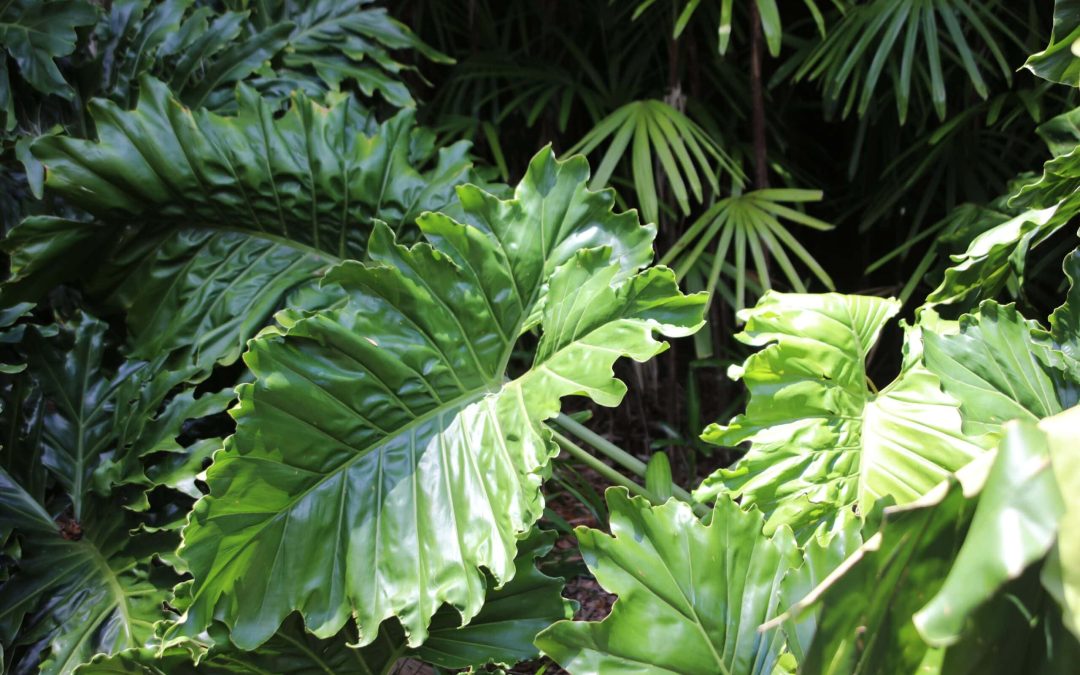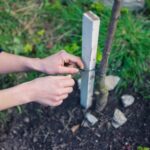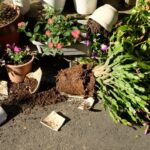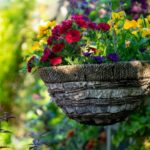Is Alocasia Easy To Care For?
The Alocasia plant care is a moderately easy plant to take care of. This beautiful plant has about 80 species and is native to Asia and certain areas of Australia. There is a wide variety of these species available for you to grow in your garden or home. Some species have leaves that can grow up to 3 feet wide, possibly with proper care and room to grow.
Outdoors, growing an Alocasia, otherwise known as an elephant ear, requires a place in your garden that receives sunlight but not too much sun. You’ll want to aim for a few hours of full sun throughout the day, but mostly indirect sunlight is most beneficial.
Certain alocasia varieties can tolerate much more sun than others but most only need the morning sun to grow sufficiently. Growing these near shrubs or against your home is a great way to provide it with enough sun, but not too much. Soil quality is also important when growing the Alocasia outdoors; you’ll want to make sure you use enough fertilizer and plant it in a place that allows the soil to drain well.
If you wish to grow your Alocasia in an outdoor planter, keep it in a place that receives morning sun but doesn’t stay in too much direct sunlight. Also, make sure the planter has proper draining. Otherwise, you could experience some issues due to overwatering.
Can Alocasia Survive Indoor?
One of the most popular house plants today is the Alocasia plant. Luckily, these plants are ideal for a house plant because they thrive in moderate conditions, which many homes can accommodate.
Anyone can grow this plant in their home, and they make a beautiful addition to your plant collections. You can grow this plant in any room that receives natural light.
How Do You Take Care Of Alocasia Indoors?
Water
The Alocasia plant actually prefers the soil to be a bit dryer than most plants, but this is only possible if the conditions of your home have humidity. If your home is too dry, you’ll want to keep the soil more moist than usual.
Sun
For your indoor Alocasia plant, you’ll want to keep it out of direct sunlight. Too much direct sunlight can cause the plant to dry, burn, and dry out the soil too quickly. But, if you don’t provide it with enough sunlight, it will be unable to grow and will eventually begin to fall apart. Keep your Alocasia in indirect sunlight, at least a few hours a day, to ensure that it receives the energy that it needs to grow.
Humidity
The humidity in your home is essential in helping keep your Alocasia plant healthy. A great way to ensure that it receives enough moisture is to keep it near a window, by an AC unit, or by a humidifier. As long as you are keeping up with its watering schedule and ensuring that your home has humidity, this plant will grow big and abundantly.
How Often Do You Water Alocasia?
When you first receive your plant, you’ll want to do a soil check in order to see if it needs to be watered. Look at the soil; if it looks wet, then you don’t need to water it right now. If it doesn’t look wet on the surface, press your finger into the soil a few inches.
If you can press your finger down 2-3″ and the soil is dry, then it needs to be watered. If you can’t make it down that far without feeling wet soil, you’ll want to give it a few more days.
Water the soil fully, making sure the entire pot is now moist. There must be enough drainage as well; otherwise, issues could occur. One of the reasons you want then allow the soil to dry properly is to prevent root rot, which is when water sits around the roots causing them to rot away. Too much water makes it difficult for the plant to absorb it all, which is the main cause of this condition.
Water every time the water levels fall below 2-3 inches in the soil. Another great way to keep your plant moist in between watering is to mist it. Using a mister bottle, lightly mist the leaves to keep them moist and healthy. Avoid over misting because too much water sitting on leaves can cause them to also rot and put too much weight on the stems.
Every once and a while, it’s important to rotate your Alocasia, especially if you keep it in the same spot for long periods of time. Rotating them enables the plant to grow evenly on all sides and gives far-off sides a chance to photosynthesize easier.
Alocasia Soil Suggestions
The alocasia plant thrives in nutrient-rich soil. Soil that isn’t too dense is ideal to allow proper drainage in order to avoid root rot. Not all soil is ideal for this plant, and you’ll want to avoid one that drains too quickly; otherwise, you’ll need to water it more frequently, and that can be harmful to alocasias.
Fertilizing your plant regularly between the spring and fall months is ideal. You can fertilize them about once per month, depending on the type of fertilizer you use. If the soil of your plants contains fertilizer upon receiving it, you can hold off a month or two until adding your own to the soil.
The Perfect Plant
The Alocasia plant is the perfect houseplant for just about anyone. It’s unique, low maintenance, and it brings a beautiful aesthetic that looks great in any garden, home, or office. While this plant is great for indoors, it’s also a wonderful addition to your outdoor space. If you’re planning to redesign your garden and need some extra assistance, the team in our landscape division can help you get started.






